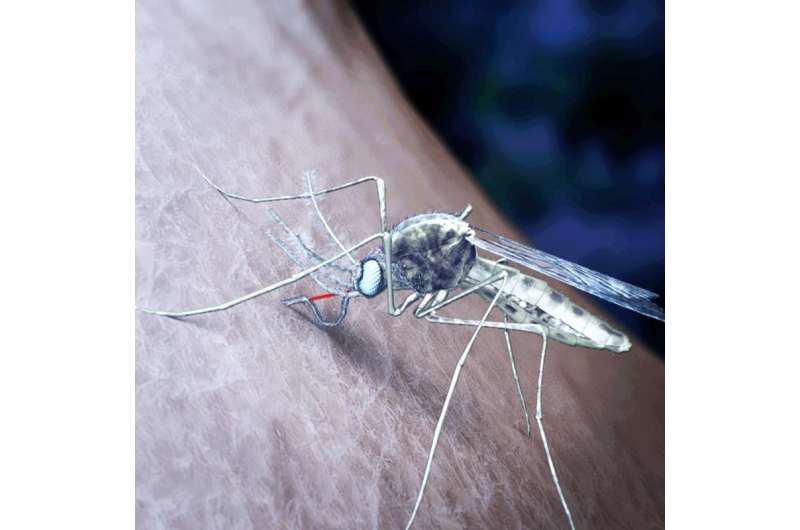3-D protein map offers new malaria vaccine hope

A three-dimensional 'map' of a critical protein that malaria parasites use to invade human red blood cells could lead to a vaccine countering the most widespread species of the parasite.
The discovery also raises the prospect of a vaccine that could target both the most prevalent and the most deadly malaria parasites that infect humans, a significant development for the future of malaria prevention.
A team of scientists from the Walter and Eliza Hall Institute established the first atomic-resolution structure of the protein PvRBP, used by Plasmodium vivax to infect human red blood cells.
The research, led by Dr Wai-Hong Tham, Dr Jakub Gruszczyk and colleagues, could allow scientists to generate new tools that block P. vivax infection and could potentially lead to a vaccine preventing the disease. The results were published in the journal Proceedings of the National Academy of Sciences.
P. vivax is the predominant cause of malaria in countries outside Africa and is a huge burden of disease across South and South-East Asia, the Middle East and Central and South America. It is also the biggest cause of relapsing malaria infections.
Dr Tham said understanding how malaria parasites gain entry into red blood cells was essential for developing strategies to prevent malaria. "P. vivax enters immature red blood cells by making proteins that recognise and bind to receptors on the red blood cell surface," she said.
"We have produced the first three-dimensional, atomic resolution structure of the protein using the Australian Synchrotron in Melbourne. We now basically have a map of where the proteins are binding their receptors, which gives us the instructions we need to begin designing inhibitors that could be used in a malaria vaccine."
In another exciting development, the team found the family of proteins was structurally almost identical to those used by P. falciparum - the most deadly malaria parasite - to infect red blood cells.
"The three-dimensional map showed us that the proteins are folded in the same way - like having similar origami instructions," Dr Tham said. "The difference is actually in the electrical charge on the surface of the molecules.
"Now that we have an atomic resolution map we hope to identify a common part of the protein that could be used to design a vaccine not only for Plasmodium vivax but potentially for both vivax and falciparum," she said.
"These two species of malaria are responsible for the majority of malaria infections worldwide, so a vaccine that targets both would be a critical addition to our arsenal."
Dr Tham said there was growing evidence that developing better treatments or preventive strategies for P. vivax malaria was imperative for malaria eradication.
"Not only is P. vivax the most widespread species of malaria, it is also more difficult to treat because it can hide in the liver for long periods of time without symptoms," she said.
"In addition, studies show that effective treatment of falciparum malaria tends to be accompanied by a resurgence of P. vivax, so it critical to continue looking for better ways to manage this species."
Current antimalarial drugs are becoming less effective as the parasites develop resistance, making the search for a vaccine vital. Up to 600,000 people die from malaria each year, mostly children and pregnant women.
More information: Jakub Gruszczyk et al. Structurally conserved erythrocyte-binding domain in provides a versatile scaffold for alternate receptor engagement , Proceedings of the National Academy of Sciences (2016). DOI: 10.1073/pnas.1516512113
Journal information: Proceedings of the National Academy of Sciences
Provided by Walter and Eliza Hall Institute



















